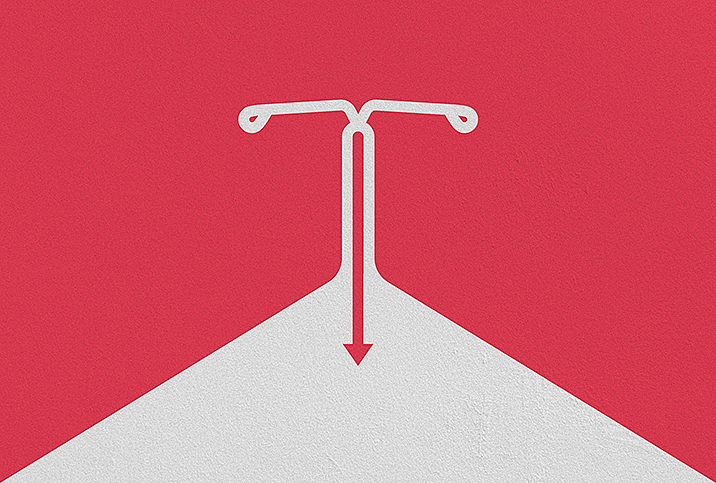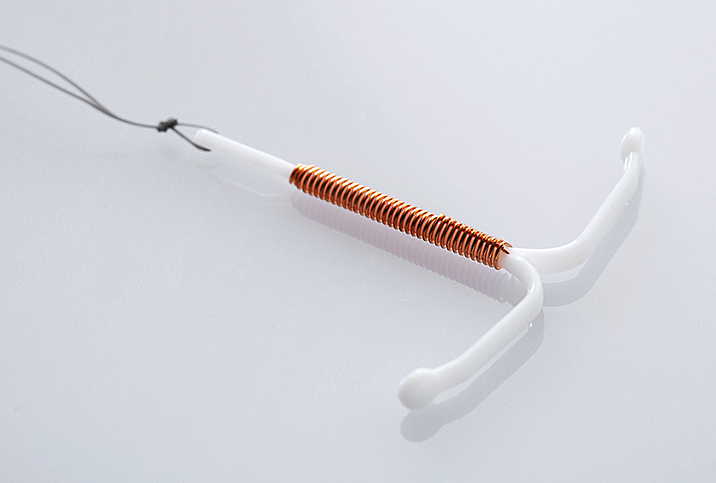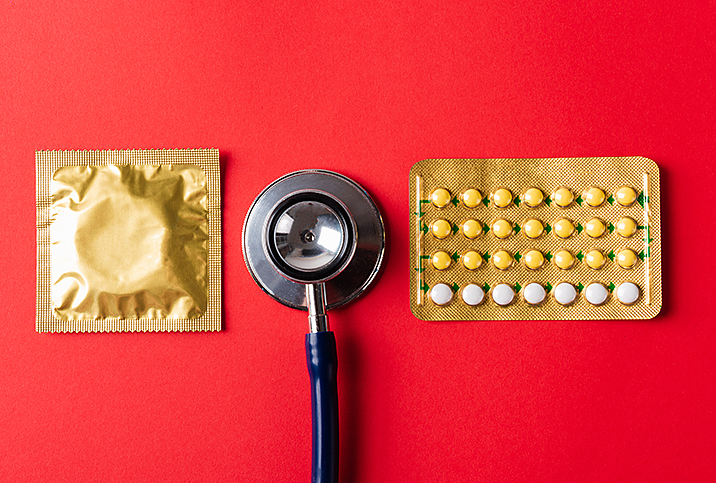Are People Self-Removing Their IUDs—Is It Safe?

After briefly reading an instructional sheet from her doctor, Janet* laid on her back and felt for the strings of her IUD. Once she got a good grip, she stood up, squatted and began to pull it out. Her hand slipped and cramped up several times, meaning the whole ordeal took around 30 minutes.
Yep, Janet successfully pulled out her own IUD.
While the thought of removing your IUD may make you tense up or cringe, Janet is far from the only person who's done it. On YouTube, videos about self-removal experiences are somewhat common. And according to the ANSIRH's IUD Removal Options Study, 59 percent of women tried to remove their IUD.
Still, Janet felt nervous and wary at first. "My physician told me that I could remove my IUD myself, and I remember being shocked and scared to do it because I saw it as a medical procedure that I would be performing on myself. But my physician assured me that I could do it myself safely," she said.
'If a sterile technique isn't utilized, there's the risk of infection. There's also the risk of cervical laceration [and] incomplete removal, where the IUD breaks.'
However, from the experience, she learned self-removal isn't always as painful as you might expect.
"Physically, the experience was overall fine," she said. "I expected to feel a lot of pain when I took it out, but it was only mildly uncomfortable. The mild discomfort was similar to the insertion process, but much less painful."
She didn't bleed after taking it out; however, she did bleed some for the next couple of days.
Janet described her emotional experience as being pretty decent, as well. While the IUD being out felt weird, it did relieve the stomach cramping she'd experienced from the IUD—which is why she wanted to take it out in the first place. As a result, she felt reassured and comforted.
"I felt very empowered being able to take out my own IUD, especially because I didn't know that it was a possibility. It was a clear physical sign of taking control of my body and reproductive system," she said.
What do you think, doc?
Even though Janet's doctor said she could take out her own IUD, how do other doctors feel about the issue? Is this a generally safe procedure anyone can do without the help of a medical professional?
"There are risks to nonprofessional removal of an IUD," warned Kenosha Gleaton, M.D., an OB-GYN and Natalist's medical director, who has seen patients who have done this. "If a sterile technique isn't utilized, there's the risk of infection. There's also the risk of cervical laceration [and] incomplete removal, where the IUD breaks."
She went on to say the entire procedure should be sterile, from the gloves to any instruments used to pull the IUD out. If you have pulled it out, she suggests looking for signs of infection or cervical laceration, which can include bleeding, foul-smelling vaginal discharge, pelvic pain and, more rarely, fever or chills.
For these reasons, Gleaton recommends people ask a medical professional to take it out.
Other experts agree. The level of safety that comes with self-removal is still being researched, according to Kelly Culwell, M.D., a board-certified OB-GYN and women's health expert. "There has been some research to teach people to remove their own IUDs, and even with instruction, only about 20 percent were able to successfully remove their IUD. It requires a good understanding of and comfort with your anatomy," she said.
She explained people may struggle to find the strings, and pieces of the IUD can get stuck inside. But the latter doesn't happen very often (thankfully).
A doctor appointment isn't feasible for all, however
But let's face the facts: Not everyone has the money, time or ability to visit the doctor's office whenever they want to. After all, that's a major reason why people are self-removing in the first place—and medical professionals know this.
"People are removing IUDs themselves for several reasons, including lack of access to appointments, long wait times for an appointment, having their OB-GYN [be] unsupportive of IUD removal or patients not wanting to admit the IUD didn't work," Gleaton said.
She explained gynecologists may be unsupportive because they believe in the benefits of IUDs and how they can help patients avoid more invasive procedures. OB-GYNs may encourage people to be patient and hold out a little longer before removing it.
Culwell shared additional issues that prevent people from being able to access healthcare. "Reasons for self-removal are usually related to lack of access to a healthcare provider for removal, either due to inability to get an appointment, lack of insurance or a high co-pay for removal," she said.
Janet is an example of someone who's faced some of these challenges, such as the difficulty of getting an appointment and struggling to wait because of the period-like abdominal pain her IUD caused.
But don't fear, accessible options exist
If you're not able to see your regular doctor or OB-GYN, Gleaton recommends visiting a local health department or free contraceptive clinic.
Culwell explained the benefits of Planned Parenthood specifically. "A clinic like Planned Parenthood is a good option for people who do or don't have insurance, as they provide sliding scale rates and often can provide same-day appointments," she said. "Some states have programs that cover birth control visits even if you don't have insurance or qualify for Medicaid."
And that's a wonderful thing, because, as it turns out, the queasiness you may feel about taking out your IUD may be something to pay attention to, according to OB-GYNs. While getting a doctor appointment can seem impossible—and annoying—you can always check out clinics in your area for inexpensive and quick expert help.
*This name was changed.


















